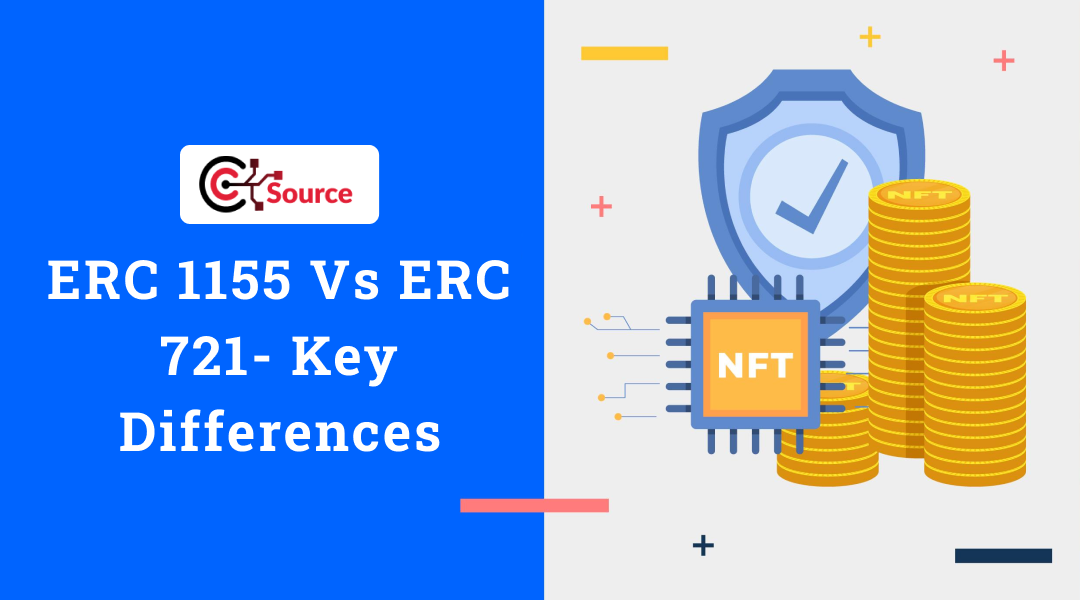The hype behind NFTs has never got diminished or deteriorated over these years since its inception, and more astonishingly as time proceeds the popularity of NFTs is growing at a staggering pace. Hence it has become the peak time to know about the disparities between ERC 1155 and ERC 721 as it is a prime thing to know while dwelling in this Crypto world. So without any further due let us dive into the difference between them both.
Ethereum got evolved as a prominent blockchain to resolve the impediments related to Bitcoin, the first-generation blockchain network. The fundamental idea behind the development of Ethereum is based on the need for an open-source blockchain network to develop smart contracts. One of the dominant use cases of Ethereum is vividly visible from token development.
Hence, the ERC 1155 vs ERC 721 conflict has become a major concern for everyone who is an enthusiast in knowing more about Ethereum. Most vital of all, these two token standards possess an absolutely imperative role in the emerging applications of non-fungible tokens. The widespread attention of the tokens ERC 721 and ERC-1155 have a significant impact on the growth of NFTs. Let us have a detailed analysis of the disparities between them.
A Brief about ERC Token Standards
Despite proceeding with the difference between the two major tokens ERC-721 and ERC 1155, it is better to get a comprehensive idea of ERC tokens standards. Hence, let’s see what is the real significance of ERC token standards in this crypto space? ERC or Ethereum request for comments is technical documentation that elucidates the methods, innovation, research, and traits intended for a particular group of users in the Ethereum ecosystem.
The ERC token standards such as ERC 721 and ERC 1155 succor accurate explanations for different rules relevant to ERC tokens on Ethereum. Most significantly, after a comprehensive review, the Ethereum community do contributions to amendments to the rules of the token standards. At present, the three most prominent ERC token standards include ERC-20, ERC-721, and now the ERC-1155.
What is ERC-721 Token Standard
If you have been a close NFT observer, you would have understood that the ERC-721 token standard is the one that started the NFT phenomenon. The standard token was a first of its own kind and enabled in development of unique tokens. The ERC-721 token standard became the prime reason for the mainstream popularity of NFTs. The ERC-721 token standard possessed an imperative role in introducing the unique NFTs to the public with Cryptokitties.
The developers of Cryptokitties, Dapper Labs introduced ERC-721 in 2017 with an Ethereum improvement proposal or EIP. Cryptokitties are a set of unique, randomly evolved kittens that can be used as digital collectibles. It has to be noted that Cryptokitties is extremely unique and it is not possible to reiterate them. Simultaneously, the transaction history provides a lucid pretension of the kitty’s ownership records since its inception.
Generally, the ERC-721 token standard provides certain exclusive features.
- Flexibility for transferring NFTs between accounts alongside the facility of trading NFTs for other currencies.
- Easy options for finding out the owners of a particular asset.
- Effective identification of total supply for a specific set of NFTs on the network.
What is ERC-1155 Token Standard
The ERC-1155 is the next token standard in the conflict and its inception has offered more of a practical solution to the different drawbacks evident with ERC-721. The origins of the project go back to the Enjin Project, which introduced the token standard in 2019. One of the most highlighting factors of the token ERC-1155 is that it constitutes the best of ERC-20 as well as ERC-721 token standards.
The biggest distinction between ERC 1155 and ERC 721 is that the latter supports batch transfers. Multiple assets can be combined into a single smart contract thanks to ERC-1155, making it possible to transfer them with little network traffic and fewer transactions. The ERC 1155 token standard’s support for both fungible and non-fungible tokens is its next noteworthy feature. How? Multiple states can be supported on a single contract and address thanks to ERC-1155.
Comparison of ERC 721 and ERC 1155
Criteria | ERC 721 | ERC 1155 |
Ease of use | Individual transactions and the need for smart contracts for every token type. | Single, the smart contracts of ERC-1155 tokens can offer multiple functions. |
Batch transfers | For batch transfer, no support | It is possible to use a single, smart contract for batch transfers. |
Support for semi-fungible tokens | Offers support solely for the development of non-fungible tokens. | Offers support for the conversion of fungible tokens to NFTs and vice versa. |
Security of assets | Not possible to return transactions after transferring assets to a fake address. | The safe and secure transfer element function aids verification of transaction validity and reiterates the transactions |
Conclusion
The most significant distinction between ERC 1155 and ERC 721 centers on how ERC 1155 overcomes ERC 721’s restrictions. While ERC-721 provided the framework for non-fungible tokens, ERC-1155 offers the characteristics needed for NFTs in the future. There are numerous significant variations between the two token standards’ definitions once you start looking into them.

